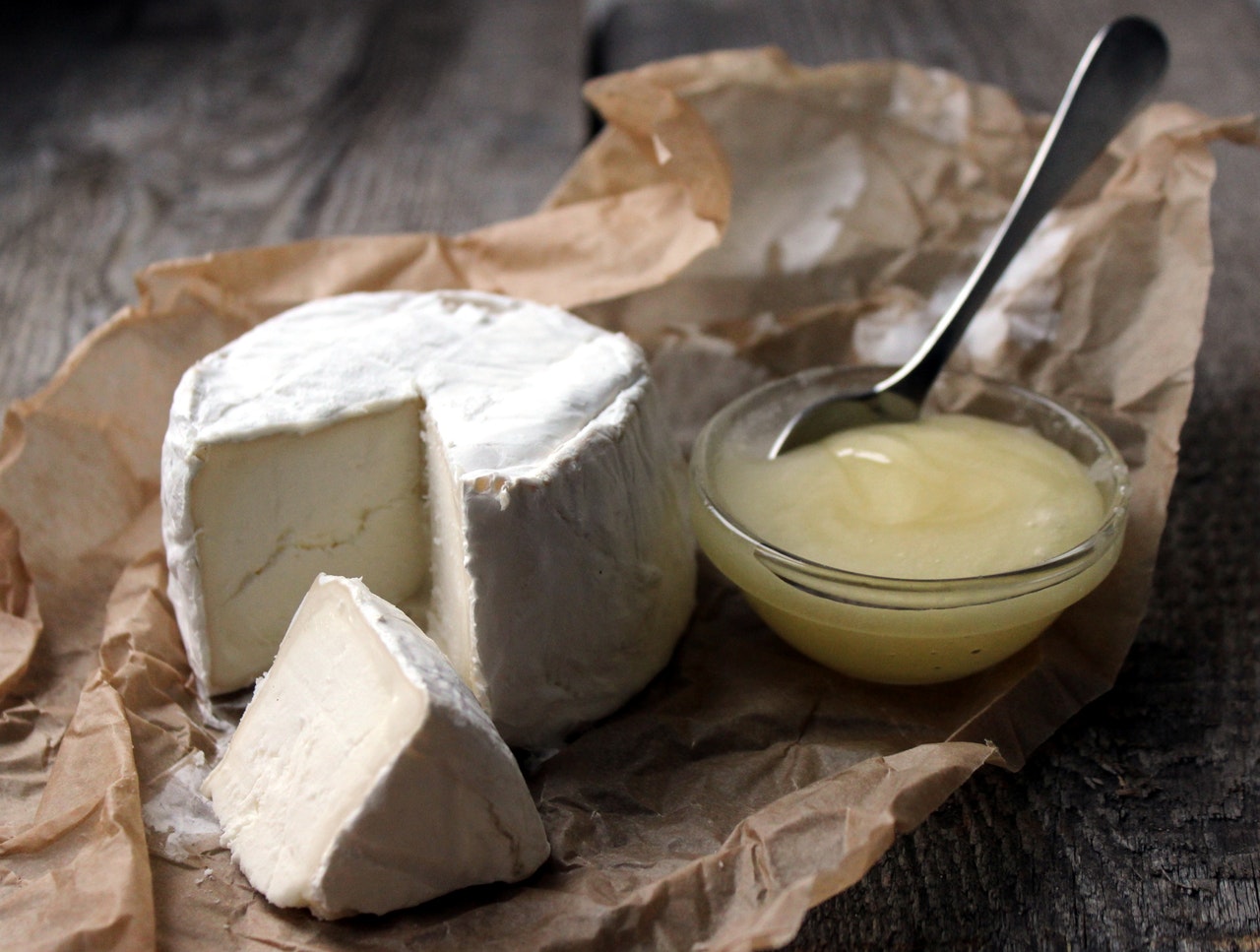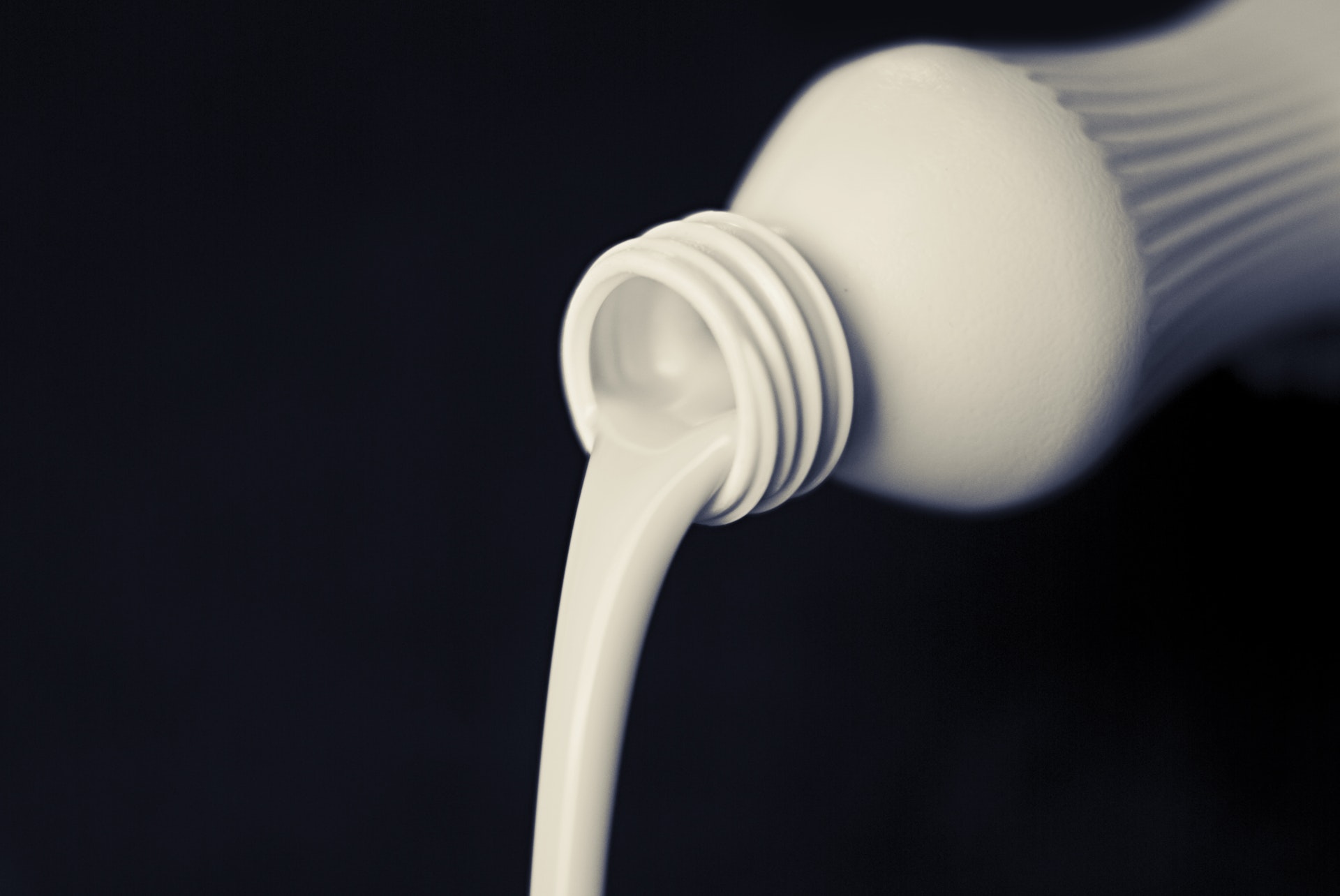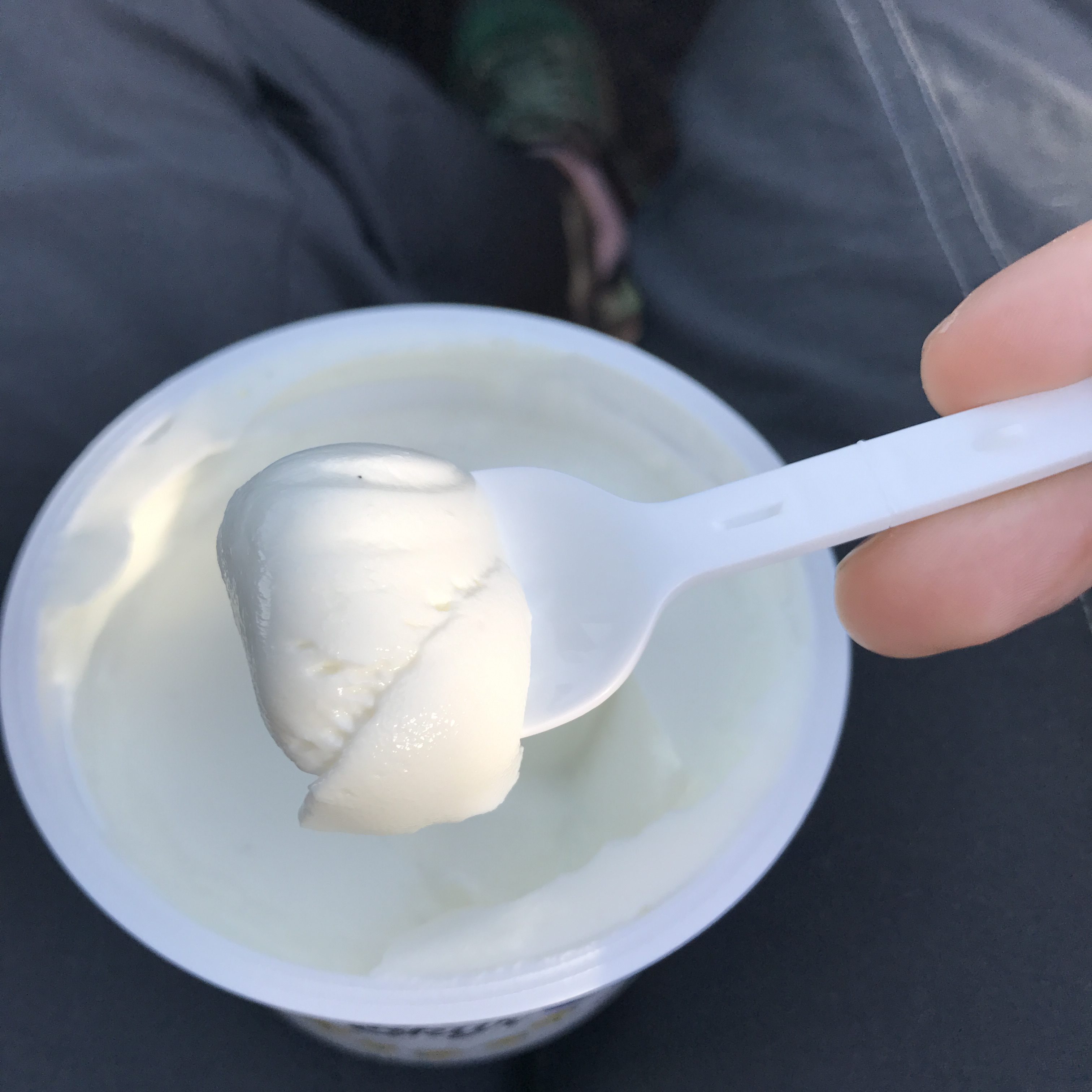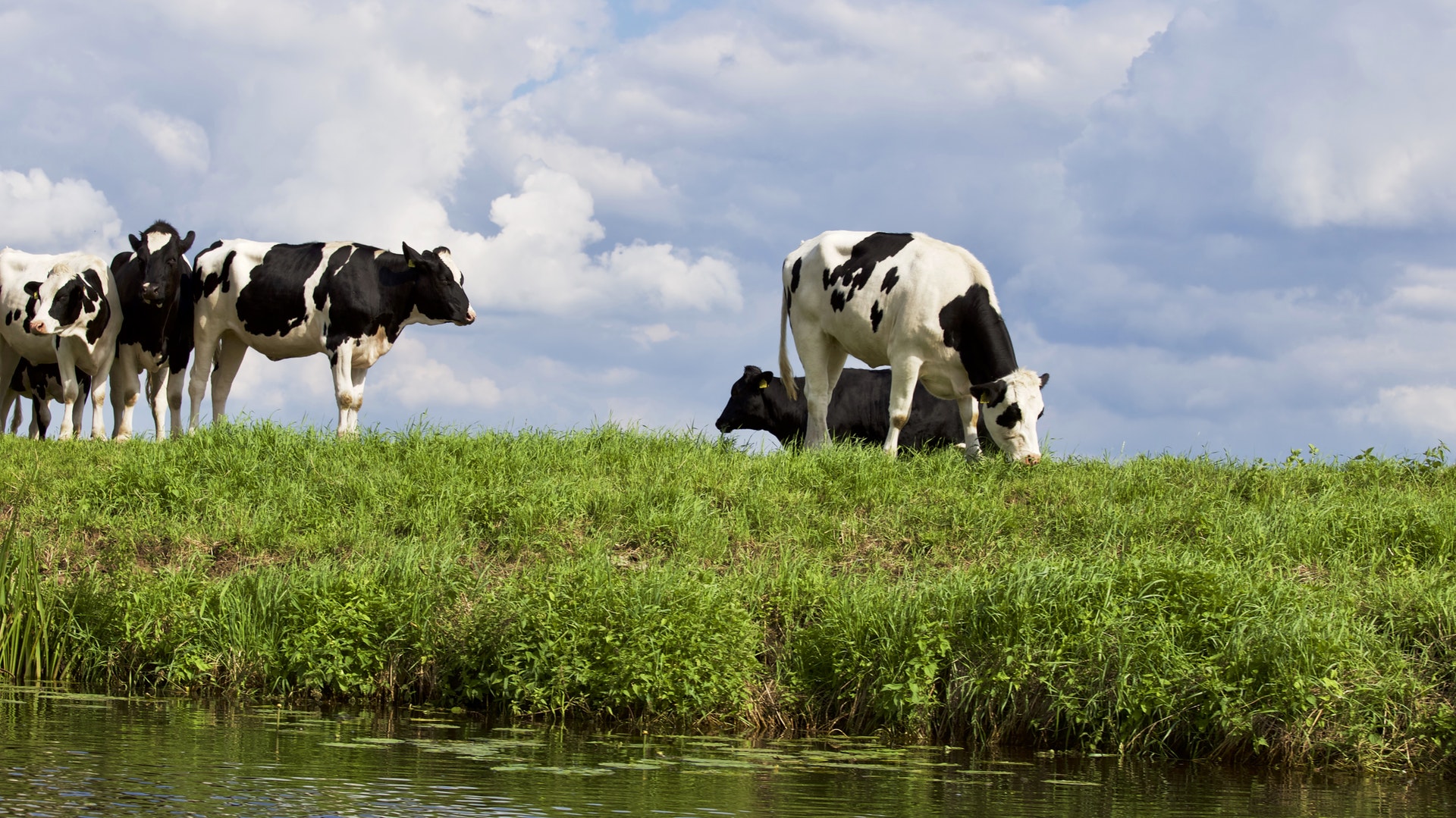When I turned 21, instead of indulging in the alcohol that I was now legally allowed to imbibe, I gave up dairy.
Yes, this is the kind of 21 year old I was.
A fun sidenote to further provide you with context of my youthful reckless abandon: my birthday is near Christmas, and the evening I turned 21 I was at home with the entirety of my mom’s side of the family for our holiday shindig watching Princess Diaries with my 6 and 10 year old cousins. I think I was in bed by 11PM.
I know what you’re thinking. I was, indeed, a wild child. Some might even say a party animal. Ruler breaker. Hell raiser.
But in truth, in the Midwest (I’m from Iowa and went to college in Missouri), not eating dairy was breaking a cardinal food rule.
It boggled people’s minds.
But in that pleasant oh-that’s-nice-dear way, because we Midwesterners are a people of politeness, even when internally we’re thinking, “can you believe that weirdo?"

If you’re not from the Midwest, it’s hard to imagine the sheer amount of dairy that's stuffed into everything. And I mean everything. And I literally mean stuffed.
This is the land where instant vanilla pudding studded with bite sized snickers and apple chunks is referred to as salad (I’m not joking, here’s the recipe), and ranch dressing was elevated from lowly condiment status to a legitimate part of the food pyramid.
If a recipe didn’t involve at least three kinds of dairy, it was underachieving.
So renouncing this creamy substrate was unheard of at the time. I can’t comment on the current state of things, as I haven’t lived in the Midwest in over a decade, but it is a stalwart place filled with those who pride themselves on tradition.
But why did I want to stop eating dairy? What clued me in?
I was very active athletically and as a result became interested in nutrition. So I started researching. My queries quickly turned to food quality and learning about the food industry, so I picked up the book Mad Cowboy: The Plain Truth from a Cattle Rancher Who Won’t Eat Meat.
The marketing team for that book did their job as they certainly sucked my impressionable mind in with their tantalizing title. Intrigued, I was sure that someone who had been a professional in the food industry could tell me accurately about the state of things.
And boy, I certainly got more than I bargained for.
I was so dismayed, shocked, and horrified at the practices in modern agriculture and treatment of animals in factory farms (I learned the term “factory farm” from the book) that I went full vegan overnight.
My world had been rocked, my food consciousness cracked wide open.
I started buying organic immediately, even though it cost more.
This was 2001 in St. Louis. There was one Whole Foods in the entire city and it had just opened.
Awareness about the devastating consequences of modern farming practices was not high, especially among those whose families had made their living farming for generations.
So I generally kept my mouth shut and my opinions to myself.
I felt alienated, isolated, and misunderstood.
But out of this self-inflicted food exile something amazing happened.
My chronic congestion and allergies cleared up within a few weeks.
That spring, for the first time I could remember, I had no sneezing or stuffiness.
For over a decade, I’d been taking allergy medications like Claritin and Nasocort (a nasal steroid spray) daily.
I remember telling my mom when I was little that my nose felt “peppery” from the pollen, my version of itchy and like I had to sneeze.
I was also diagnosed with exercise-induced asthma and put on an albuterol inhaler.
I believed that I needed it even though I really didn’t have any asthma symptoms and shot my lungs up with steroids most days.
So I asked myself what the difference was that year and it became pretty obvious that one of the food groups I had eliminated was the serendipitous culprit.
I didn’t actually discover that it was a dairy issue until a few years later in naturopathic medical school.

I still had no idea what a food allergy, sensitivity, or intolerance was. I just knew that I felt better and that was reinforcement enough to stay away from dairy, eggs, and meat.
This was the beginning of my 12 years of being mostly dairy free.
There were slip-ups from time to time, especially when I was dating.
Who wants to be the high-maintenance girl on a first date who needs to go to a special restaurant or asks the waiter to hold the cheese and butter and gluten (yes, I avoided that, too), and oh can I get oil and vinegar dressing? That’d be great. There’s ice cream for dessert? Do I want to split some with you? Oh... Sure! Why Not?
Part of this charade was my desire to connect over sharing a meal, and another part was denying that I had an issue and desperately wanting to appear normal, whatever that means.
The vast majority of those dates weren’t worth the sacrifice, but you live and learn to respect yourself and your needs as you get older.
My third date with my now-husband involved fig, feta, and balsamic pizza, and a stroll along Seward Park in Seattle on a warm evening in late spring where I casually used his favorite word (intrinsic) and he decided he really liked me. That was worth it.
Smash cut to 3 weeks ago, in Iceland.
My husband and I had finally taken our long-awaited Iceland vacation. We were 2 days in and I had judiciously been avoiding all of the foods I’m sensitive to — dairy, gluten, eggs, citrus, to name a few. Who wants to feel awful on vacation? I sure don’t.
But then there was warm, fresh-baked Icelandic rye bread and butter for breakfast, and I caved.
I love bread and butter so much. It’s one of those simple joys for me. You know the ones. You could do them every day for the rest of your life and they’d never fail to make you happy and content.
It was glorious, to say the least.
And, it was a calculated risk. Rye bread is lower in gluten and I only have a mild sensitivity. Butter’s high fat content minimizes the typical inflammatory components in milk.
And I was just fine for the rest of the day. Success!
The following day I felt more daring. All over Iceland in grocery stores and gas stations there’s something delectable called skyr. Technically it’s cheese, but it eats like a really thick, creamy, out of this world a-ma-zing yogurt. My husband had been snacking on it since we arrived.
Unlike most people whose favorite dairy delight is cheese, mine is yogurt. I have dreams about yogurt. I love the sour tang paired with the silky smooth texture. YUM.
I was emboldened by my bread and butter experience the previous day, so once again, I caved.
I bought some skyr and ate it with pure delight, telling myself that this would be the one indulgence if I reacted.
This is the actual skyr. I took a couple photos to preserve this delightful historic experience.

And I felt totally fine.
Usually my sinuses get inflamed anywhere from 15 minutes to 4 hours after eating dairy, I sneeze, sometimes I get a headache or my glands by my jaw get swollen.
Nada.
So guess what I did? I think that’s pretty apparent.
I ate skyr every day and stopped worrying so much about my food sensitivities.
By the end of the trip, I had had only very mild reactions to a few things.
I had even tried a sip of fresh-from-the-cow-that-was-milked-30-feet-away milk.
It was delightfully weird after eschewing milk for over a decade.
I also got to meet and pet said cows and it was very, very exciting (I love cows).
So, what was different?
Why were these dairy products so kind to me?
I wasn’t about to give up this new-found food freedom when I returned to the States.
I bought 4 extra skyr at the airport much to my husband’s amusement, stuffed them into my carry on, and started researching as soon as I got back.
Here’s what I discovered.
Iceland is a glorious land untouched in its purity for hundreds of years. The livestock that’s present is descended from what the Vikings brought over with them from Scandinavia.
According to Wikipedia, Icelandic cows are closest to Blackside Trender and Nordland Cattle from Norway.

This is the first cow that I met in Iceland. We'd been in the car about 30 minutes and I had Chris pull over because I'd never seen a brindle cow before.
She was a bit disappointed that I didn't have food for her and ambled off soon after sticking her tongue out expectantly.
I remembered reading an article a few years ago about different cow breeds producing different types of casein proteins that drastically affected inflammation levels in people.
I had brushed it off at the time, thinking that there’s no way that one protein would be my answer.
It turns out that the non-inflammatory milk cows are typically found in Africa, Asia, Southern Europe, and, you guessed it, Iceland.
So let me break it down for you in case you’re wondering what in the world casein is, why it's in milk, and how-do-I-find-that-A2-casein-dairy-for-the-love-of-god-I-want-to-eat-cheese!!
Casein (its full name is beta casein) is a normal protein found in the milk of all cows.
There are two main types: A1 and A2.
Hold on to your hooves, we’re going to dive into the magical world of cow breeds for a bit.
In old-timey times (a technical term, of course) more than 10,000 years ago, all cows produced A2 casein.
Fast forward 2,000 years and nature did what it does best: evolve.
A single gene mutation in Holstein cows, also known as Holstein Freisian, resulted in the production of A1 casein.
FYI, Holstein cows are the quintessential black-and-white cows dotting picturesque green grassy hillsides. They’re also quite large.

The mutation got passed to other breeds as cows were domesticated because Holsteins were used to improve milk production.
For context, Holsteins produce a whopping 8 - 11 gallons of milk PER DAY. Wow!
Over time, A1 casein became dominant in herds in North America, Western Europe, Australia, and New Zealand.
Cows in Africa, Asia, Southern Europe and Iceland have had less breeding with Holsteins, so the A2 casein is naturally higher in their milk.
These breeds include Guernsey, Jersey, Brown Swiss, Normandes, as well as some Asian and African herds.
In case you were wondering, the milk of sheep, goat, donkey, yak, camel, buffalo, and humans all contain mostly A2 casein.
Jersey and Guernsey cows are typically smaller, fawn colored, and have huge button eyes making them the most adorable cows EVER.

Their milk yield is lower than Holstein cows, though according to the American Jersey Cattle Association nutritionally it's jam packed with 15-20% more protein, 15-18% more calcium, 10-12% more phosphorus (super important in building bones), and more B12 than the average glass of milk. There’s also a higher percentage of butterfat, making butter-fiends rejoice.
Guernsey milk is often referred to as golden milk because it's so high in beta-carotene, the orange-colored antioxidant you find in carrots. It's also 3x higher in omega-3s than other milk.
Guernsey milk contains 12% more protein, 30% more cream, 33% more vitamin D, 25% more vitamin A and 15% more calcium than other milks. It also has a higher percentage butterfat than typical Holstein milk.
So let me summarize all of this A1/A2 business for you and which cows have what going on genetically.
Holstein cows produce milk that’s anywhere from 85/15 to 50/50 balance between A1 and A2 casein, respectively. So holstein milk has A LOT OF inflammatory A1 casein.
Over 50% of Jersey cows carry the A2 casein gene, but with considerable variation throughout the herds. So, Jersey cows tend to have more A2 and less A1 in their milk, but they are not fully A2 producing, unless they've been specially bred for the A2 gene (a few farms are starting to do this).
More than 90% of Guernsey cows carry the A2 casein gene. They are the safest bet for A2 casein dairy without calling the farm and asking them directly about A1 and A2 in their herd.
Wait a minute, aren’t there other components of dairy that can be irritating?
Emphatically YES.
There are 3 potentially inflammatory proteins in dairy, and I’m not even getting into the milk from the poor cows who are in factory farms and fed ridiculous amount of antibiotics, growth hormones, and GMO corn and soy feed.
Do yourself (and everyone) a favor and don’t buy that stuff.
I know this is more work and you’re very busy, but don’t buy something just because you’re familiar with the brand. Big organic dairy companies, like Horizon, have come under fire for misleading labeling and using ingredients that aren’t organic.
Try to find small, local dairies and talk to them about their products. We’ll get into that a little later.
The 3 components of dairy that folks tend to have trouble with are lactose, casein, and whey.
If you have a lactose issue, you’re usually aware of it pretty early in life because milk and dairy cause lots of gas, bloating, and diarrhea.
This in-one-end-and-out-the-other reaction is an intolerance, or simply lacking the lactose enzyme to break down the milk sugar. It’s irritating, so your body says, “See ya!” and moves it right on through.
Taking a digestive aid, like Lactaid can provide you with some enzymes to break down the lactose, but it won’t help if you’re also sensitive to casein or whey.
Casein is more prevalent in milk than whey, and we’ve already learned that it comes in an A1 (typically inflammatory) and A2 (typically fine) form.
Casein is also more highly concentrated in hard and aged cheeses because they’re basically a big, condensed ball of milk.
Whey is the liquidy stuff that’s present when you pop open the top of your yogurt, sour cream, or any other dairy product. It’s also very common in powdered protein supplements.
So, how do I find out what I’m sensitive to?
Easier said than done… brace yourself… you eliminate all dairy for a few weeks. Preferably 4 to 6, and a bare minimum of 2.
Yikes! I know. I totally understand. I’ve done it multiple times. It’s difficult.
It takes some thoughtful planning and perseverance, but it can be done.
If you want some extra guidance, check out my super comprehensive post about figuring out your food allergies.
I walk you through lots of great stuff about the elimination diet, common mistakes, and there’s a special, in-depth guide that you can download all about the hardest phase, reintroduction.
Yes, believe it or not, adding stuff back in is way, way harder than taking it out.
Symptoms that you might find disappear after eliminating dairy:
- gas and bloating
- diarrhea
- acne
- heavy, painful periods
- PMS
- asthma
- allergies
- sinus congestion/infections
- lymph node swelling (especially around the jaw)
- upper respiratory infections
- bronchitis
- tonsilitis
- ear infections
So the question is, which component of dairy is causing these issues?
My best guess is the A1 casein, which is linked to significant gut inflammation, which leads to generalized inflammation, a potential trigger for Type 1 diabetes, coronary artery disease, and autoimmune disease.
Clinically, I’ve seen casein issues create all of the symptoms listed above. It is more rare for people to be whey-sensitive, and lactose intolerance has a different set of symptoms, as discussed above.
Now, since it’s a bit hard to come by A2 casein products in the US, I can’t say definitively if these symptoms are caused by A1 or A2 casein, but through my research I haven’t found any evidence suggesting that A2 creates the same inflammatory response in people. A2 seems to be widely tolerated.
If you want to read more about A1 and A2 milk, check out this book: Devil in the Milk: Health and Politics of A1 and A2 Milk by Keith Woodford.
After a few weeks, or when your symptoms have cleared*, you get to reintroduce! Yay! (*please note that you may have multiple food sensitivities. To gain the most improvement in symptoms, all food sensitivities must be eliminated.)
Be careful! This is a process that involves attention to detail if you want to get your answers.
For a dairy reintroduction, you’ll have to decide what you want to test and what to test it with!
Remember, we’ve got lactose, two types of casein, and whey.
If you want to test sheep or goat milk separately there’s even more.
Some people like to test butter by itself as well, since it’s high in fat and usually low in lactose, casein, and whey.
You’ll find the most lactose in milk, but you’ll also have casein and whey in there.
Whey is the easiest to test with whey protein powder.
And casein… well… it’s worth finding A1 and A2 casein products, most likely milk, and seeing how you do.
For more detailed instructions on how much and how frequently to eat these foods, and the general reintroduction procedure, check out my free guide.
There’s one more way dairy can affect us that I haven’t mentioned yet.
From a Chinese medicine perspective, dairy is a very damp food and too much can cause significant discomfort.
What is a damp food, you ask?
In Chinese medicine, all foods have energetic properties based on their composition and taste, and they directly affect different organs, helping or hindering that organ's ability to function.
When I say organs here, I mean organs in the sense of the Chinese medicine understanding, which is not analogous to the Western understanding.
So without getting into too much detail, the damp properties of dairy can negatively affect the spleen, which is the main digestive organ in Chinese medicine.
Too much cold and damp in the spleen hinders digestion and can manifest as gas and bloating, lack of appetite/feeling of fullness, slowed bowels, slowed mental function, lack of concentration (organs in Chinese medicine also have mental and emotional components), heavy limbs, lethargy and fatigue, swelling/water retention, and a disconnected feeling.

As you can see, some of these symptoms may overlap with the ones we already discussed above, but there are some new ones, too!
Be on the look out for these more mental/emotional/constitutional symptoms as well when you eliminate and reintroduce dairy.
Some constitutions in Chinese medicine are more prone to having difficulty with dampness (earth elements in particular), and the environment and season also plays a role. If you’re curious about your own element, which tells you about your mental, emotional, and physical health and needs, check out my 5 Elements Personality Test.
So, where does this leave us?
Well, by now you know your safest bet for A2 casein products is from Jersey or Guernsey cows.
However, finding these delectable dairy treasures is harder than it should be, in the US at least.
Ideally, you’d be able to call the company and speak with them about their beautiful bovines to ascertain if their milk is A2 or potentially mixed with A1 casein.
I’ve been doing this pretty much non-stop since returning from Iceland.
I’ve run into mostly dead ends, so I’m sorry to say that I have very little to show for my efforts.
But I do have a few leads/tips that I’m happy to share with you.
Questions you want to ask the company:
- Are the cows in your herds Jersey, Guernsey, or Holstein?
- If they are Jersey or Guernsey, have they been genetically tested for producing A2 casein only?
- Are your dairy products made with only A2 milk? Be really, really specific about this one. I've found a couple dairies that have A2 herds but who mix in Holstein milk with some of their products. Be sure you ask which milk is in which dairy product.
- Do you pool your milk with other facilities? This is a little piece that I found out about larger dairies. Oftentimes milk is pooled, so a herd with all A2 milk might get combined with Holstein milk and you’re back to square one.
- Are you considering producing dairy products with only A2 casein? Can I make a request that you do so? The more people who ask this question, the more companies will respond!
- Do you know of any farms that use Jersey or Guernsey cows producing A2 milk products? This might be a long shot, as they’d be giving you information about a competitor, but it can’t hurt to ask.
You can also call your local grocery store and ask them to stock Jersey/Guernsey A2 casein products. Again, the more people who start asking, the better chance there is stores will start carrying these products!
I have had remarkably good success with this from my local Thriftway (a Washington grocery chain). So if anyone reading this is local to West Seattle, check out Thriftway for a few of the products I’ll mention below!
On to products. What have I found?
I’m located in Seattle, WA, so most of my resources are concentrated in that area. I do include any Guernsey/Jersey resources I found in my searches.
Yogurt/skyr:
Sadly, most Icelandic skyr products in the US that are “Icelandic style” (including the most popular brand, Siggi’s and Icelandic Provisions) are just that. Thick, creamy yogurt made with Holstein cow milk. I cry.
I did find one brand, Smari, that is Icelandic style skyr made from Jersey and Guernsey cows. I seem to have a mild to no reaction. Hallelujah. This is currently available at the West Seattle Thriftway.
The main Icelandic brands, Kea and Isey, are not yet available in the US.
Cheese:
Spring Hill Jersey Cheese allows you to order their products online, but they are not 100% Jersey milk and many are a Jersey blend, so other types of milk are added in. If you have a very mild casein sensitivity, they may be appropriate.
Barn and Butter does too, but I'm not clear yet as to if their products are A2 casein only.
Skagit Maid cheese is available in a few stores and at the Mount Vernon farmer’s market. Their cheese is made from 100% Guernsey milk from My Shan Dairy in Lynden, WA. I need to confirm that it's fully Guernsey.
Milk:
Old Silvana Creamery located in Arlington, WA is a grocery store that sells raw Guernsey milk. It’s available at Ken’s Market in Seattle.
Twin Brooks Creamery is local to Lynden, WA and their products include milk (1%, 2%, whole), heavy cream, whipping cream, chocolate milk, and seasonal eggnog. They’re 100% Jersey cow milk, and their herd produces about 70% A2 casein (I called and asked, they're super friendly!). Twin Brooks is carried in many Seattle grocery stores and they also offer home delivery!
The A2 Milk Company headquartered in New Zealand, sells, you guessed it, A2 milk products. If you see anything labeled A2 milk, it contains only A2 casein.
Apparently, this A2 idea caught on in Australia and New Zealand and some herds are being selectively bred in order to only produce A2 casein again.
I did find an interesting article from 2015 stating that the A2 Milk Company was investing in bringing their product to the US. But, who knows how that process is coming along at this point.
You can find A2 Milk Company products in the US by using their store locator. I typed in my zip code and found 1 store that carries A2 milk about 10 minutes away (Metropolitan Market for all of you West Seattle folks reading this!).
If it isn’t available near you, you can call the company and ask who their distributors are in the US, then check in with your local grocery store to see if they use the same distributor. Or, start with the grocery store and see what they can find out for you!
Butter:
Cherry Valley Dairy and Barn and Butter both have Jersey cow butter.
Cherry Valley is completely A2 casein and is available at the West Seattle Thriftway (thanks, Irene!). The great thing about these guys is that they have set their dairy up to be only A2 producing cows. They’re featured in this Seattle Times article if you want to know more.
Whole Foods will supposedly soon carry the lovely Icelandic butter, Smjor. I’ve been calling them, and have been told to call back every few weeks. So if you want Icelandic butter you won’t react to in Whole Foods, give them a call!! Make sure to buy some when it’s in, as they’ll cycle through the specialty butters if they don’t sell.
Other dairy products:
I have not had much luck finding A2 products like sour cream, cream cheese, buttermilk, etc. I think we’re still too new to this concept in the US. Fortunately, I don’t think these are too hard to make yourself… not that I’ve extensively looked into it… yet.
A few creameries that I’ve found around the US potentially offering some A2 dairy products to their local area:
Snowville Creamery in Ohio
Yoder’s Country Market in Buffalo, NY
Barrington Natural Farms in Dundee, IL
Guernsey Farms Dairy in Northville, MI
Sunny Knoll Eco Farm that has no location information on their website, but I think may be in Virginia?
Golden Valley Guernseys in Virginia
Woodbourne Creamery in Maryland
My Shan Dairy in Lynden, WA
And for those of you in northwestern Washington, check out Sound Harvest Delivery. They offer delivery of many small farm dairy products which include Guernsey and Jersey products.
And if you’re adventurous enough to want to make your own dairy products, check out Spirited Rose Homestead Dairy Farm for their tutorials.
![]()
I truly hope I’ve helped you find some answers to your dairy queries, and that you’ve enjoyed reading about my own personal journey with dairy.
Food sensitivities are difficult and alienating, and if I can help make that process just a little bit easier for anyone else, I’m very happy to do it.
And please, if you have any resources that I’ve not mentioned here, please feel free to leave them below in the comments and I’ll add them to the post!
Did I sound desperate there? Sorry. Kind of.
